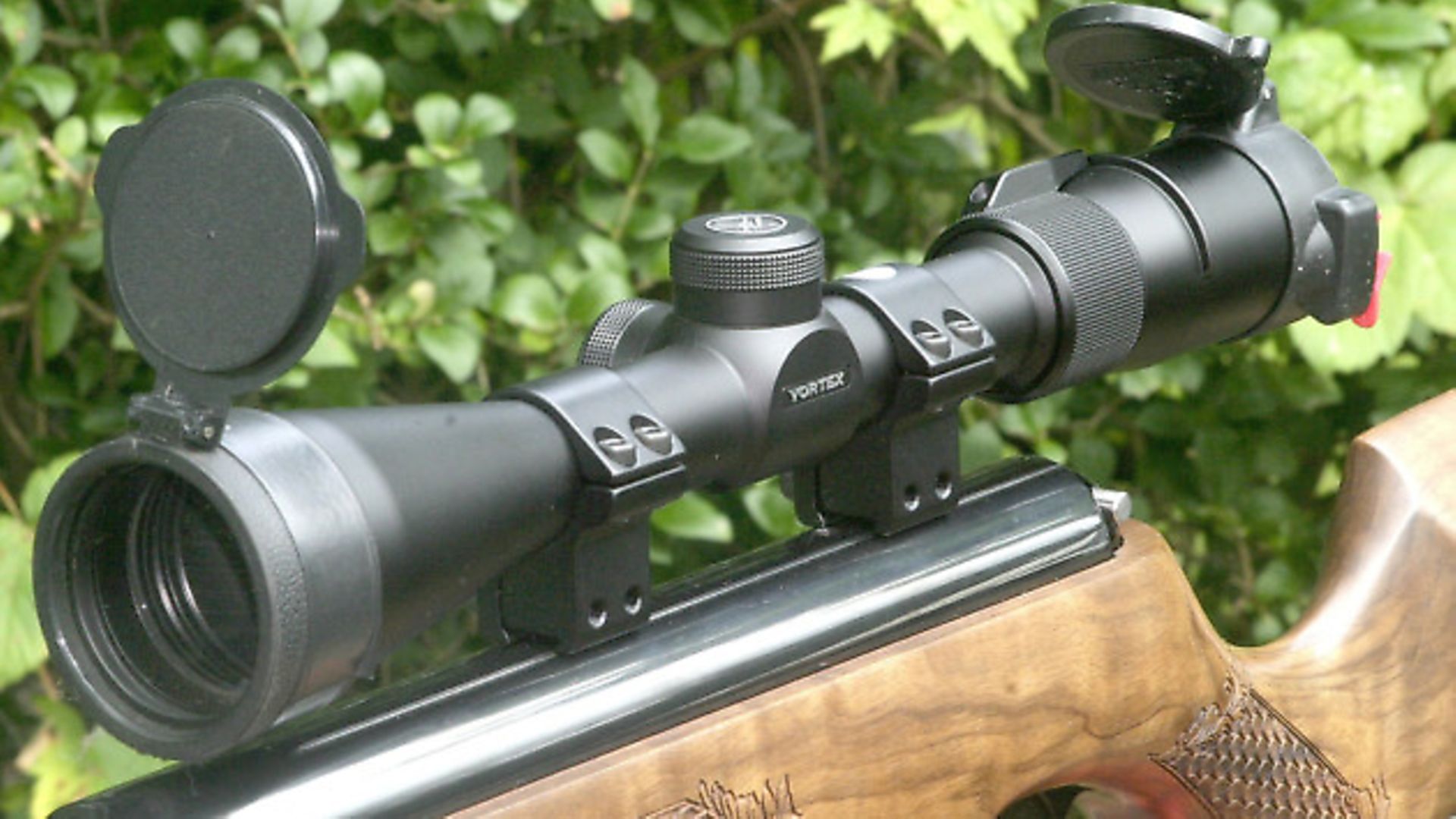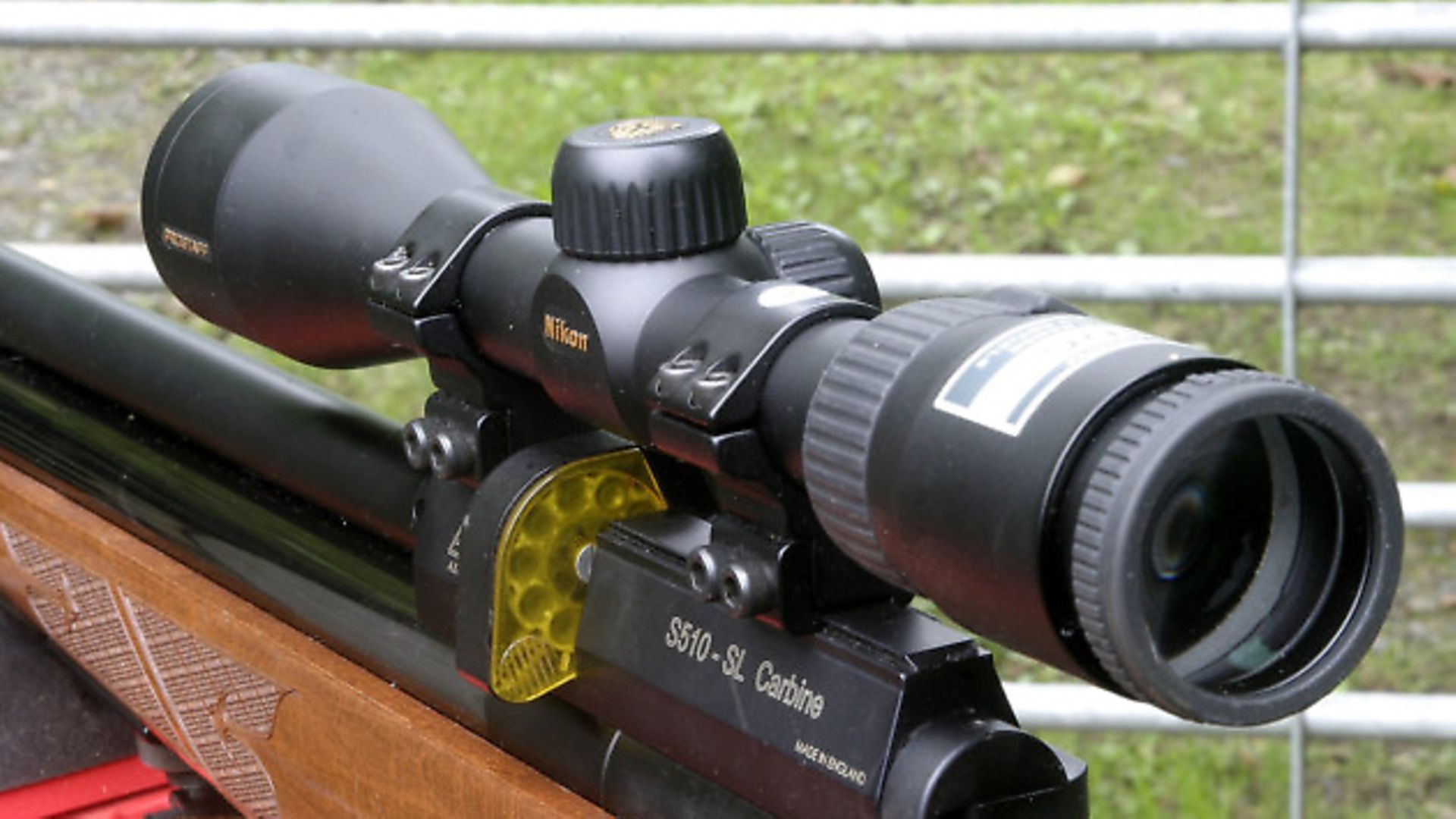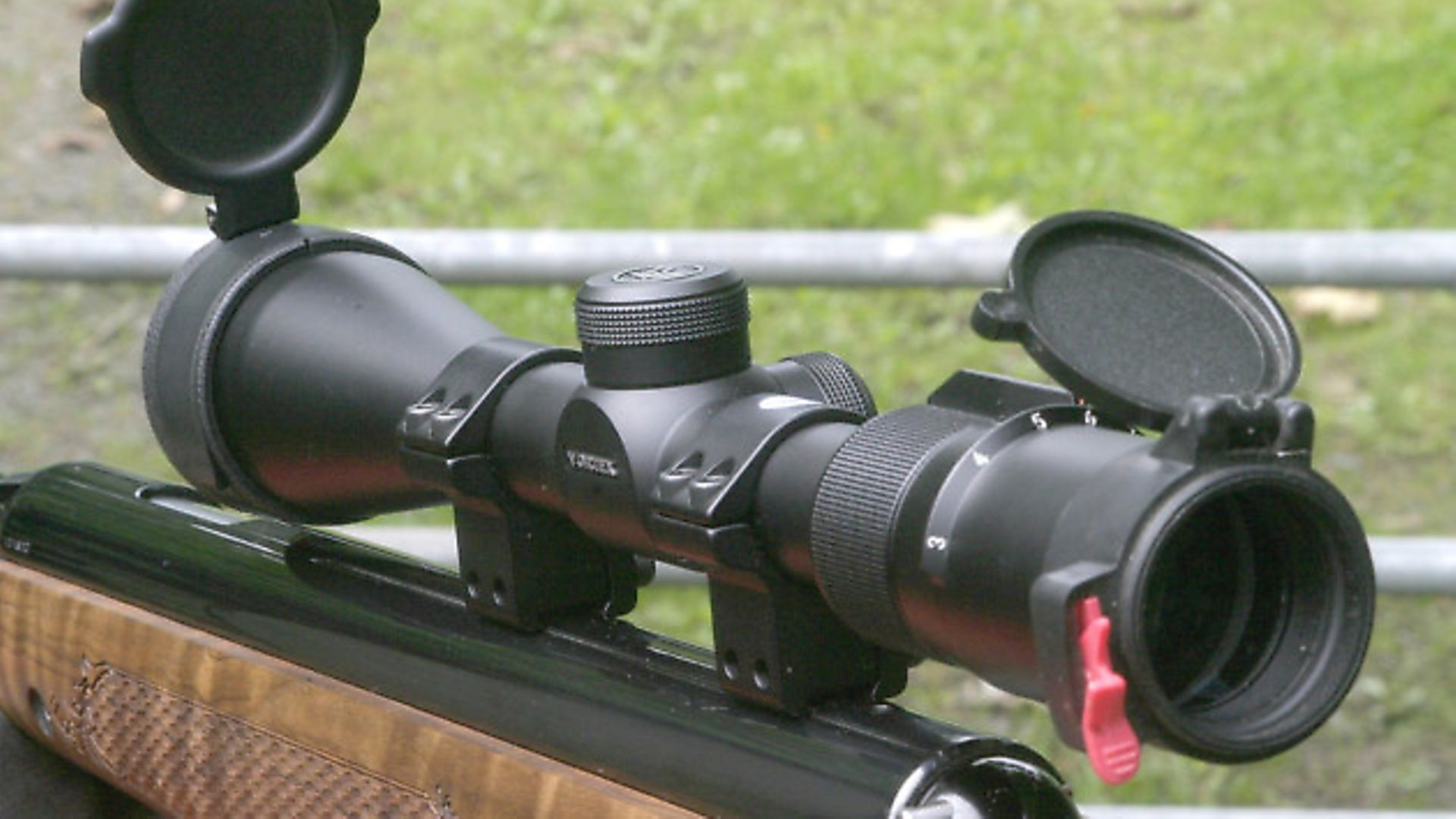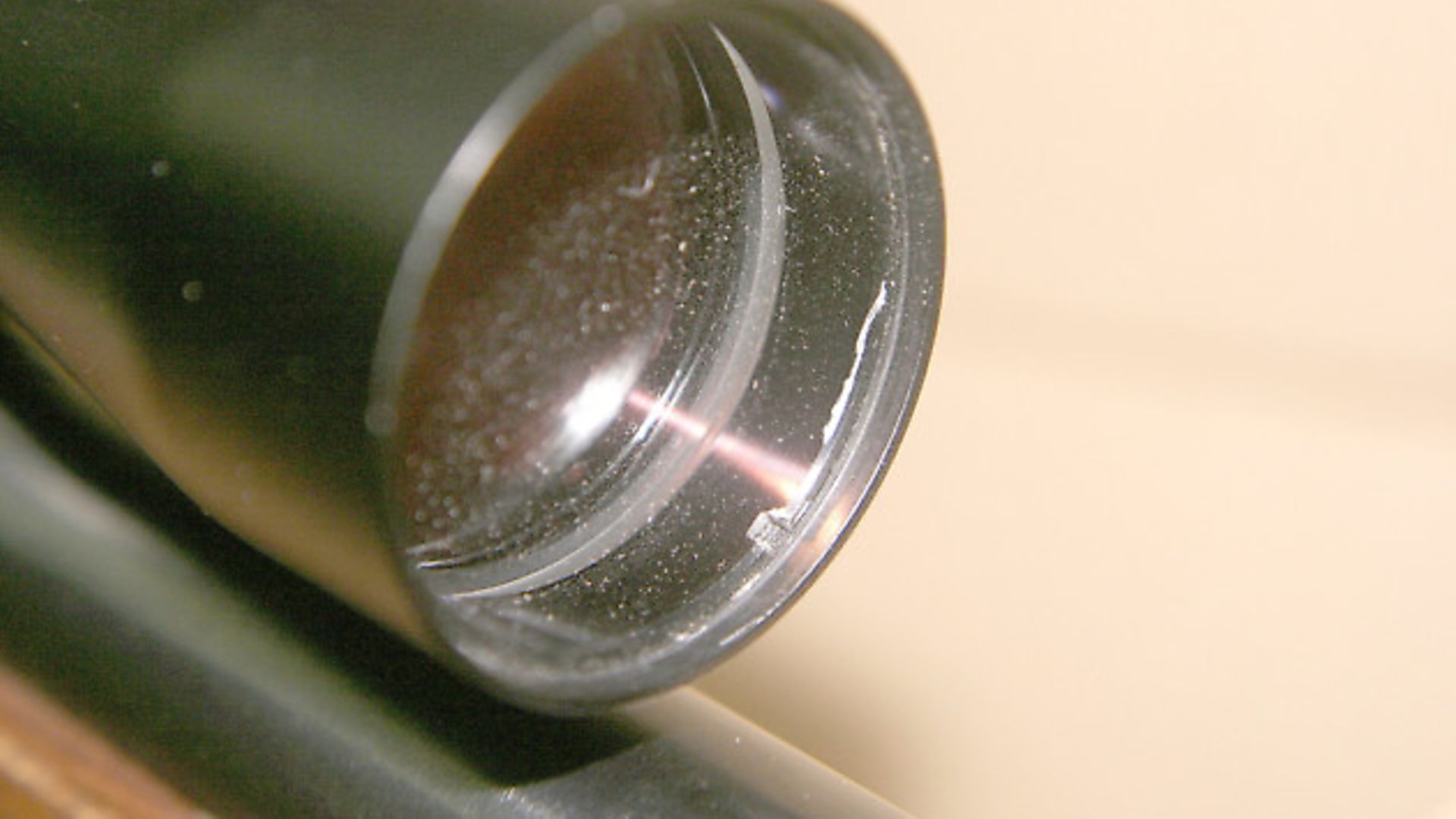Jim Tyler looks at, and through, the most ubiquitous of zoom scopes, the jack of all trades that is the 3-9 x 40
 credit: Archant
credit: Archant
When advertisements for scopes with 1” tubes first popped up in the late 1970s, the 3-9 x 40 was the top-of-the-range specification. It was the dream scope, priced beyond the range of many pockets (including mine).
Over the years, more expensive scopes with other, usually higher, magnification ranges appeared, along with scopes featuring larger objective lenses. Both sold well to people who assumed more magnification and bigger lenses were better. Meanwhile, the price of the 3-9 x 40mm reduced until the present day, when some examples are far from being unaffordable dream scopes, but genuinely bargain basement entry level.
Another reason for the abundance of low cost 3-9x40mm scopes is that the 1980s scopes were, in the main, made in Japan, while most come from China today, where manufacturing overheads are lower. You can pick up a brand new 3-9 x 40mm scope for under £30 and, whilst the optics won’t be anything to write home about, it should prove perfectly serviceable adequate for most purposes.
Basics
 credit: Archant
credit: Archant
The 3-9 magnification range is very useful for general airgun hunting. Three power offers a wide field of view and is extremely useful at close range, mid-range six power makes the most of the scope’s performance in low light conditions, and nine power allows a 45-yard target to be viewed effectively from 5 yards, which is quite enough magnification for most purposes.
Nine times magnification is plenty for HFT, and a low-cost 3-9 x 40 with multiple reticle aim points is an excellent ‘first’ scope for those wishing to try the sport without spending a lot of money.
At nine times magnification, the (parallax) focus can be set so targets perhaps over 40 yards and under around ten yards appear blurred, which helps in range-finding at the two distances at which the pellet is furthest from the sight line. In outdoor competition disciplines, it is only really in FT and bench rest shooting that higher magnifications are advantageous.
A 40mm objective lens is approaching the largest that can be mounted in medium height scope mounts, depending on the rifle, which is good for short to medium range shooting as it gives nearer point blank ranges than scopes in high mounts. (PBR - the distance between the nearest and furthest points at which the pellet is so close to that sight line that the shot can be aimed dead-on). In addition, few stock combs are anything like high enough to give decent cheek weld with taller scope mounts, and the better the cheek weld, the better you shoot.
 credit: Archant
credit: Archant
In the dark
Some people think large objective lenses are essential for shooting in low light because they let in more light. But unless used at fairly high magnification, that extra light simply does not enter the user’s eye. The circle of light reaching the eye is called the ‘exit pupil’ and its diameter is easily calculated by dividing the objective lens diameter by the degree of magnification.
So the exit pupil of a 3-9 x 40 ranges from 40 divided by 3 (13.33mm) to 40 divided by 9 (4.44mm).
If you are to see the light emitted by the scope, it must pass through the pupil of your eye which, in low light, contracts to between 5mm (older people, smokers) and 7mm (fit, younger people). No matter how big the objective lens is, the extra light won’t be noticeable.
A 3-9 x 40mm scope used at 6x magnification gives a 6.6mm exit pupil, which makes the most of what light is available. If you use a higher magnification, the image may vignette, meaning the edge is dim, although this should not affect the brightness of the central section of the image.
 credit: Archant
credit: Archant
For not a lot
I have two budget 3-9 x 40mm scopes, a Nikko Mountmaster and a CenterPoint, both with adjustable ocular lenses for parallax focusing and multiple aim point reticles. While neither has seen intensive use, both have been pressed into service when a Nomads HFT club member needed to borrow a scope for a spring airgun, and there have been no reports of any reduction in scores compared to what might be expected using a more expensive scope.
I have only ever had two scopes fail in the three and a half decades I’ve been using them, but I still won’t be without a back-up scope, just in case of damage. Also, if your rifle loses accuracy, you can swap the scope and check the issue really is with the rifle and not your main scope. The versatility and low cost of a 3-9x40mm makes it the ideal back-up.
There is a huge range of low-cost, 3-9 x 40mm scopes on the market, and because the build quality will not match the expensive scopes, I would advise avoiding any that are unbranded. Keep to known brands and buy from an established retailer.
 credit: Archant
credit: Archant
Some low cost 3-9x40mm scopes come complete with mounts, and like the scopes, they are built to a price rather than a quality. But they do the job. Before buying a scope that comes with mounts, check they are not too high as manufacturers usually make or buy in one height of mount for all scope sizes, which usually means up to 56mm. High mounts plus a low comb means you end up resting your jaw against the comb, rather than your cheek. In such cases, it’s better to buy a scope and the correct height mounts separately.
Class glass
If you are prepared to forego niceties such as illuminated reticles and parallax focus, there are some pretty classy 3-9 x 40mm scopes available for reasonable prices.
I have three mid-range 3-9 x 40mm scopes with superb optics: a Burris Fullfield 11 that cost me £60 second-hand and currently lives on my .20 HW95; a £150 Nikon Prostaff for my S510; and a Vortex Viper at just over £200, which adorns my TX200.
 credit: Archant
credit: Archant
None has parallax focus, and all three are focused from the factory at 100 yards, so what does that mean in practice?
Well, most of my shots are in the range of 25 yards to 30 yards, at which the maximum theoretical parallax image shift is 7.5mm to 6.5mm. It sounds awful, except that with a modicum of care in maintaining eye position behind the scope, the actual parallax shift is under a quarter of the theoretical maximum, or less than 1.88mm to 1.6mm. I was able to focus the Nikon and Vortex manually to suit airgun ranges, with no problem, although not the Burris.
Around the £200 mark, it’s worth looking at scopes from Leupold, Redfield and Bushnell. The glass won’t be the best the manufacturer produces, but you’d have to spend a lot more to buy a scope noticeably better. Like my three mid-range scopes, most will have fixed (parallax) focus, some can be focused manually while others not, so check before buying.
The 3-9 x 40mm really is the jack of all trades, and master of quite a few.
_____________________
You may also like:
Review: Bushnell - 3-9x 40mm
How to make sense of scope specifications
Scope review: Optisan HX 4-12×40 AO